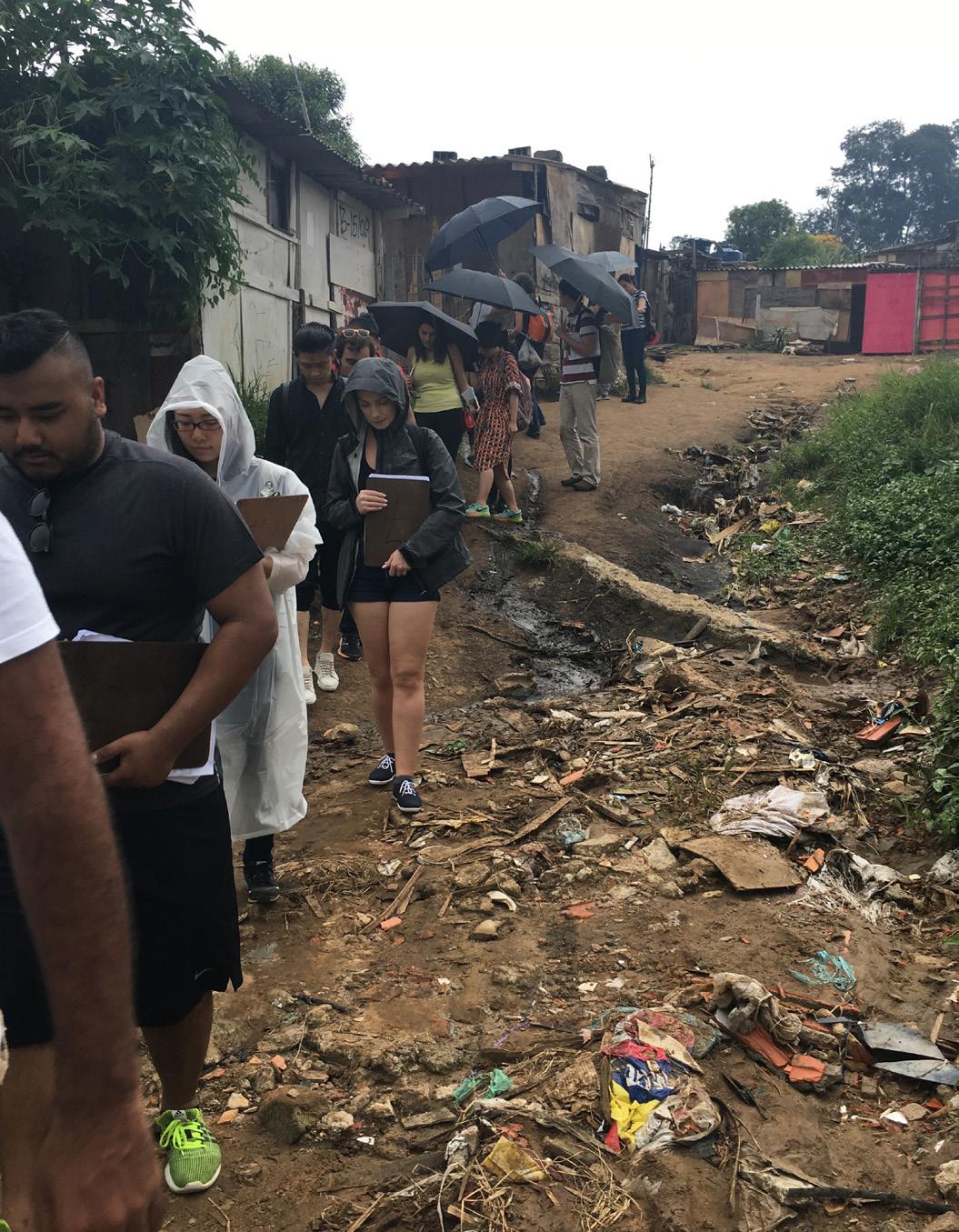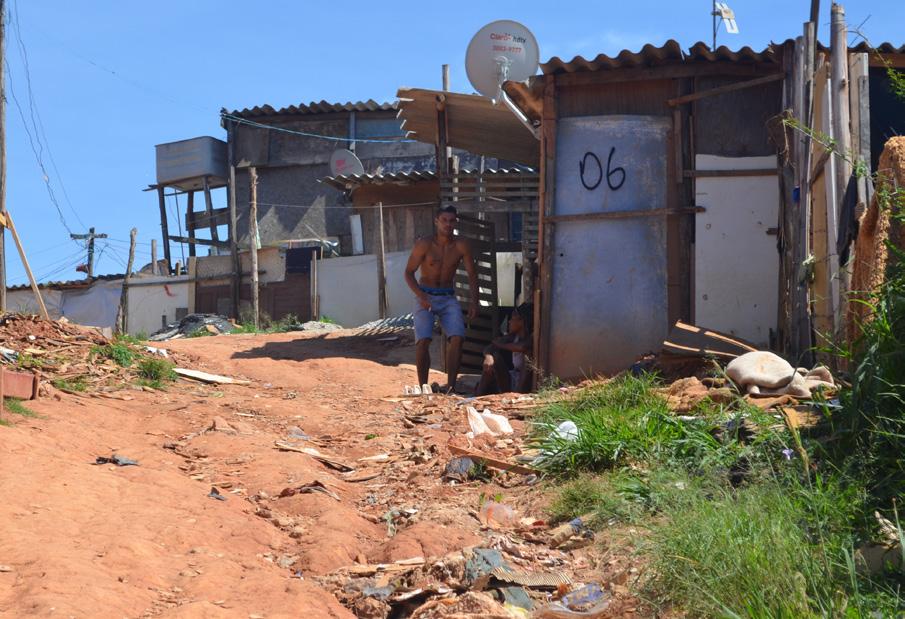
2 minute read
Introduction
The Taubman College Team used field methodologies over the course of three days while on-site in Ocupação Anchieta. The variety of methods helped with the triangulation of data and included: stakeholder interviews, door-to-door household surveys, direct observation surveys and mapping, water and soil testing, and a community meeting. These methods illustrated information on current site conditions, the socio-political environment, as well as community interests. Translators assisted the Taubman College Team with interpersonal interactions to overcome the language barrier.
33 (previous) Taubman Team Strategizing Data Collection. 34 (left) Taubman Team During Data Collection.
Architecture and Urban Planning Master students from Taubman College and two faculty members from each discipline traveled to São Paulo, Brazil, from February 27 to March 9, 2017, to conduct field research. The Taubman College Team traveled to the community of Ocupação Anchieta (the Occupation) and spent three full days there: February 27, March 1, and March 5. While on site, students spoke with the clientpartner and residents to learn more about the community and gather feedback on preliminary recommendations and proposals.
To ensure that field methods were conducted universally throughout the project Taubman College Team was informed by The USAID Rapid Appraisal (RA) approach. “Rapid Appraisal is an approach that draws on multiple evaluation methods and techniques to quickly, yet systematically, collect data when time in the field is limited” (Vondal, 2010). This approach is participatory in nature and therefore could be referred to as ‘participatory’ rapid appraisal. Considering the time and budget constraints, using rapid appraisal for field research was the best option. One challenge with rapid appraisal, however, is the validity and reliability of findings, if the goal is to make assumptions about the general population. To increase confidence in the results, findings were triangulated, meaning multiple methods of data collection were utilized so the findings could be checked against each other.
The field methods inspired by the RA approach include conducting interviews, doorto-door household surveys, direct observation, and a wellattended community meeting. As a group, Taubman College Team interviewed the clientpartner, Ocupação Anchieta Association (the Association) coordinators, the landowner, Instituto Anchieta Grajaú (The Institute) (IAG), and local experts to help students gain

35 Dirt Streets with Trash Slope Down Towards Creek Area.
a better understanding of Ocupação Anchieta and São Paulo. The door-to-door household surveys were led by pairs of Portuguese speakers and Taubman Team students. The direct observation method allowed the students to collect data on physical elements of housing and infrastructure without the dependence of a translator. 200 residents attended the twohour community meeting on our last day in Ocupação Anchieta.
No up-to-date map of the community is in existence. In response, the Taubman Team hired a drone to photograph the site. These images were captured to produce an accurate base map of Ocupação Anchieta. Additionally, students conducted water and soil quality tests. The water quality tests were intended to help provide preliminary evidence that there is indeed water contamination in the Occupation. The soil test findings were intended to demonstrate evidence of soil contamination and inform recommendations pertaining to vegetation and design proposals. The water and soil testing are beneficial tools to monitor the impact of the proposed creek revitalization project, further environment initiatives spearheaded by any stakeholder,






